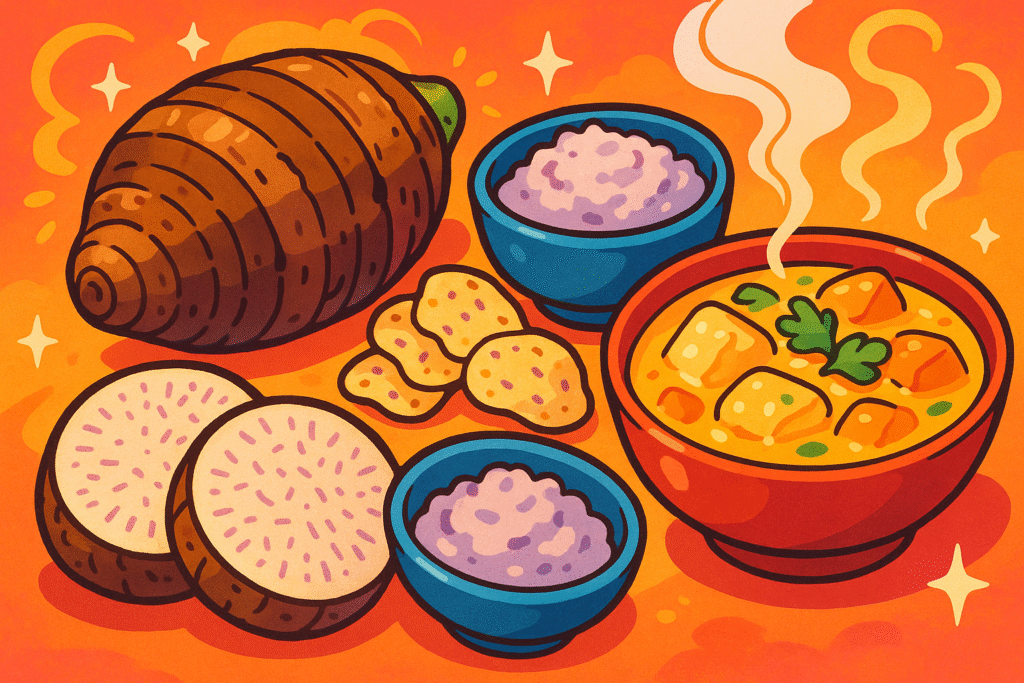Taro (Colocasia esculenta)

About Taro
Taro is a starchy root vegetable with a nutty flavor and a creamy, fibrous texture when cooked. It’s used in both savory and sweet dishes — from steamed taro buns to richly spiced curries and crispy chips.
The flesh can be white, purple, or speckled, depending on the variety.
The History of Taro
One of the oldest cultivated crops, taro has been farmed for over 9,000 years. It originated in Southeast Asia and spread across the Pacific via Polynesian voyaging canoes.
In Hawai‘i, it’s sacred — the basis for poi and deeply tied to cultural identity. It’s also a staple in Indian, Chinese, Filipino, and Caribbean dishes.
The Science of Taro
Taro is rich in complex carbohydrates, fiber, potassium, and vitamin E. It contains resistant starch, which feeds gut bacteria, and has a low glycemic index.
Raw taro contains calcium oxalate crystals, which can irritate the throat — cooking neutralizes them.
The Geography of Taro
Taro grows in tropical, wet climates — often in flooded paddies or marshy soils. Major producers include Nigeria, China, the Philippines, India, and Pacific islands like Fiji and Hawai‘i.
Its leaves, also edible, are cooked like spinach in dishes such as laing in the Philippines or luau in Hawai‘i.
Varieties of Taro
Eddoe
Smaller, round, and hairy. Common in Caribbean and Chinese markets.
Dasheen
Larger and smoother. Used in West African and Polynesian cooking.
Bun Long
Popular in Hawaii for poi. Creamy and neutral in flavor.
Blue Taro
Flesh with lavender tones. Popular in desserts and ice cream.
Elephant Ear (wild)
Grown ornamentally but not always edible — not recommended without proper prep.
FAQs All your questions about Taro: answered
Can you eat taro raw?
No — it must be thoroughly cooked to remove calcium oxalate, which can irritate the mouth and throat.
Is taro the same as yam?
No — they’re completely different botanically and culinarily.
What does taro taste like?
Nutty, slightly sweet, and creamy — a cross between potato and chestnut.
Can you eat taro leaves?
Yes — but they also need to be cooked well. They’re used in soups, stews, and coconut-based dishes.